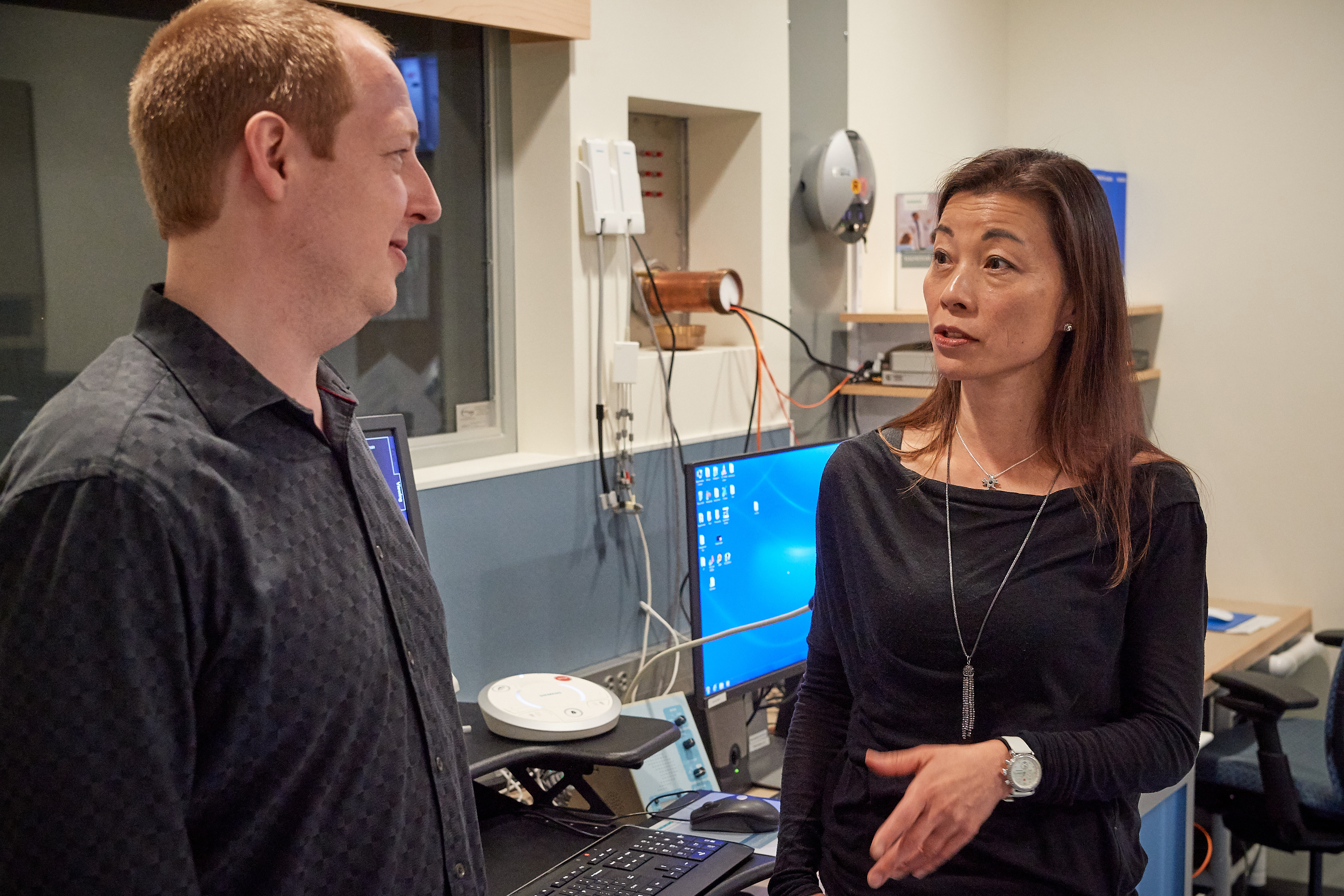The amount of gray matter in a kindergartner’s brain can predict whether she will have trouble with reading comprehension as a third grader, according to researchers at UConn, who made up part of an international team.
Their work, published in the journal PLOS One, provides new information on the neural basis underlying reading development and possible root causes of the common learning disability dyslexia.
About 10 percent of U.S. children have dyslexia, which is a general difficulty learning to read that does not affect other aspects of intelligence. Most people affected eventually learn to read, but it can be a challenge for many of them to grasp meaning from text. However, some dyslexics have trouble decoding – translating print into sound – yet their reading comprehension is high. Neuroscientists call these people resilient dyslexics.
UConn cognitive neuroscientists Fumiko Hoeft and Roeland Hancock wondered if there was something fundamentally different about the brains of resilient dyslexics compared with others.
In a multi-part study, Hoeft, incoming director of UConn’s Brain Imaging Research Center (BIRC) and Hancock, associate director, collaborated with researchers at Tel Aviv University, Boston College, MIT, and Haskins Laboratories to try and see what these brain differences might be.
They first looked at children between the ages of 10 and 16. Half of the children had reading disorders, half read normally. All of them were tested for their ability to decode and for their reading comprehension. The researchers then imaged the kids’ brains with MRI, and compared images from kids who had good reading comprehension but poor decoding with images from kids who had the reverse, or did poorly or well at both.
They found that children with good comprehension relative to their decoding had larger gray matter volume in the dorsolateral prefrontal cortex, a part of the brain just above and to the side of the eyes.
Did children who worked hard at reading comprehension build more gray matter? Or is it more gray matter that allows them to get good at reading comprehension?
To answer that question, they recruited kindergartners with and without a family history of reading difficulty and followed them over three years, doing MRI brain scans and reading comprehension tests.
Kindergartners with more gray matter in their dorsolateral prefrontal cortex had better reading comprehension than their peers in third grade. It was predictive.
“Something pre-existing is different about the brains of people who become good readers despite decoding trouble,” Hancock says.
It’s unclear if it’s due to genes or experiences. But whatever it is seems to affect how the children used the dorsolateral prefrontal cortex part of their brains. That part of the brain seems to be involved in executive functions such as memory and recruiting other brain regions to work on tasks. So it may be that resilient dyslexics are recruiting other parts of their brain to help out.
For Hoeft, it’s both a fascinating neuroscience question and one of social justice. One of her sons has decoding trouble but good reading comprehension, and she wonders why.
“He’s seven. He’s reading Harry Potter, and no one would diagnose him with dyslexia, but he has all the typical risk factors [for reading trouble].” Is it that he grew up in the enriched linguistic environment of a university professor’s home with books everywhere that helped him? Or is it something inborn? Are the kindergartners who grow up to be good readers in third grade already having different experiences than their peers before they start school, or is it something innate? Hoeft’s colleague Hancock admits to no such personal interest in the research, but apparently he’s pretty fast with text.
“Roeland is a fast – annoyingly, obnoxiously fast – reader!” Hoeft says.
Hoeft and Hancock have several other research projects in the works to look further into the causes of dyslexia. Some of them focus on using MRI to find alternative pathways in the brain that resilient dyslexics might be using to read.
Another project will zoom in on the nature versus nurture aspect of the question. Hoeft and Hancock have begun recruiting couples who used assistive reproductive technology to have a child. Some couples use their own sperm and egg and have the fertilized embryo implanted into the mother’s womb. Some use donor sperm, or a donor egg, or a surrogate woman to carry the baby to term, or some combination of these. Hancock and Hoeft plan on recruiting families formed using each of these combinations. As far as they know, no one else has ever studied brain development in this way before. They’ll test the reading and math skills of each parent and child in these families to separate out the influence of genetics, the environment of the womb, and the environment of the home on dyslexia and the brain.
The research was funded by the National Institute of Child Health and Human Development; the National Science Foundation; University of California Office of the President Multicampus Research Programs and Initiatives; Oak Foundation; UCSF Dyslexia Center; Ray & Lori dePole; Dyslexia Training Institute; The Potter Family; and the Currey Ingram Academy.



